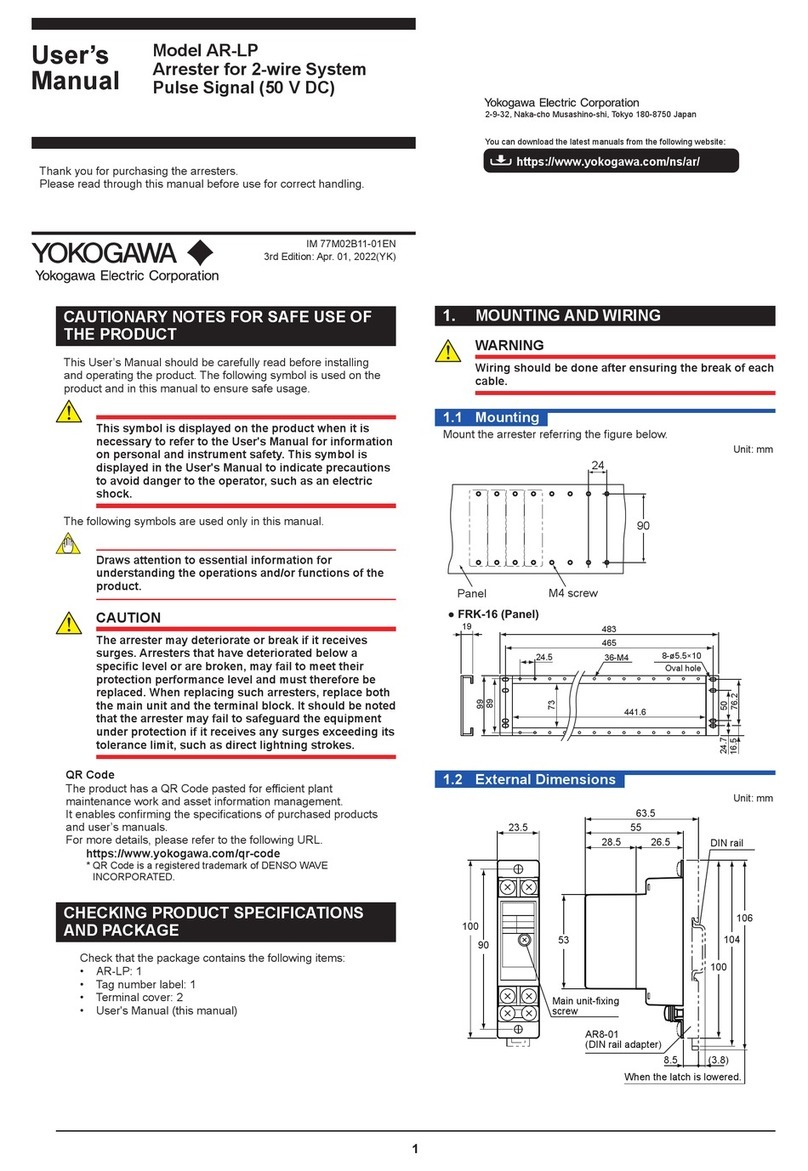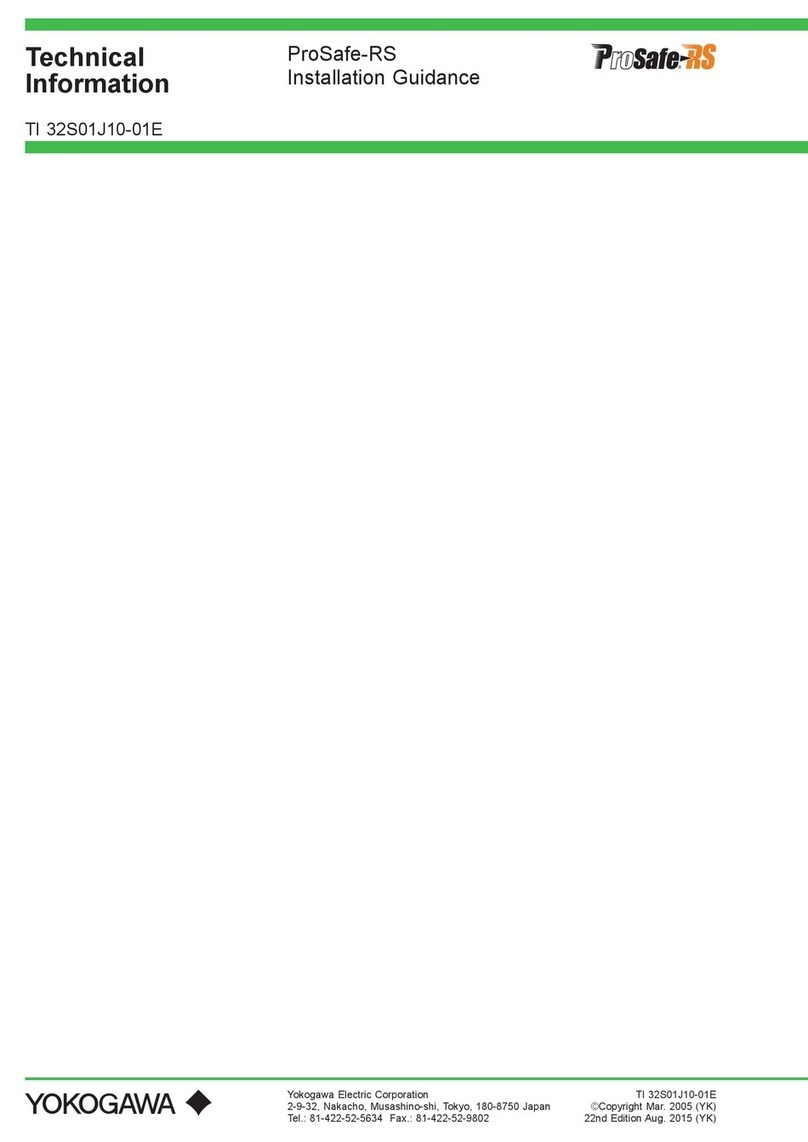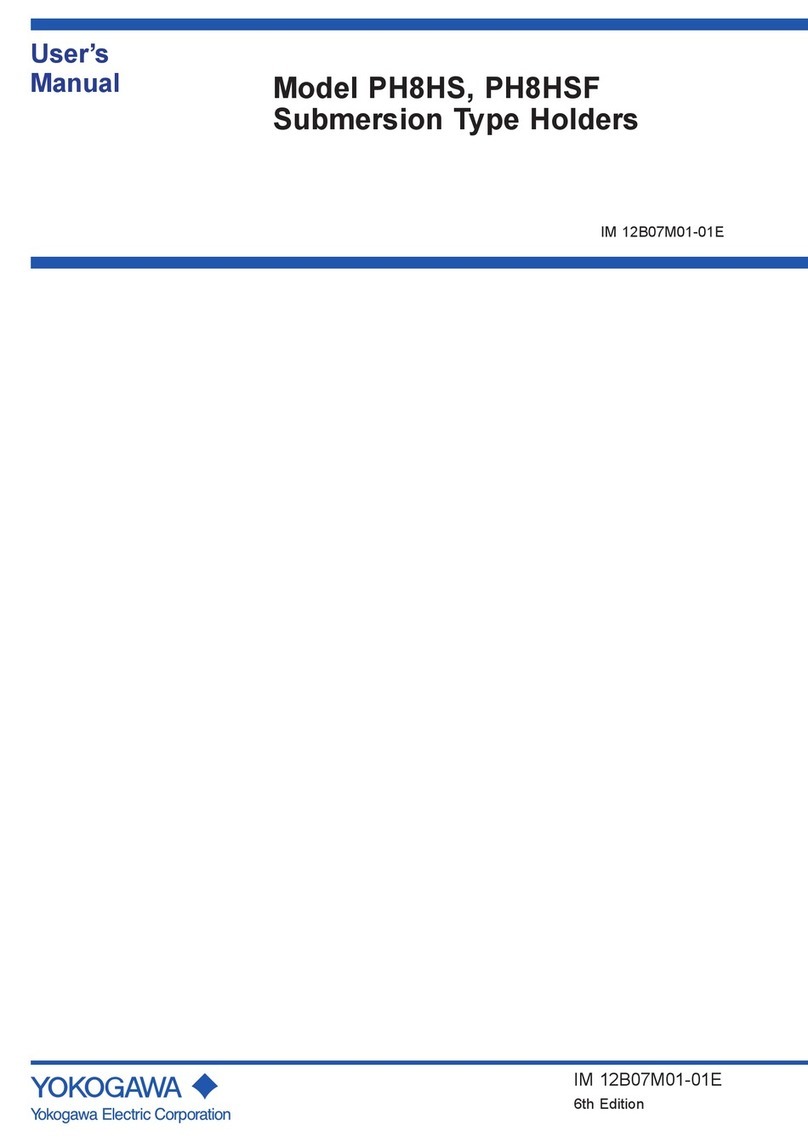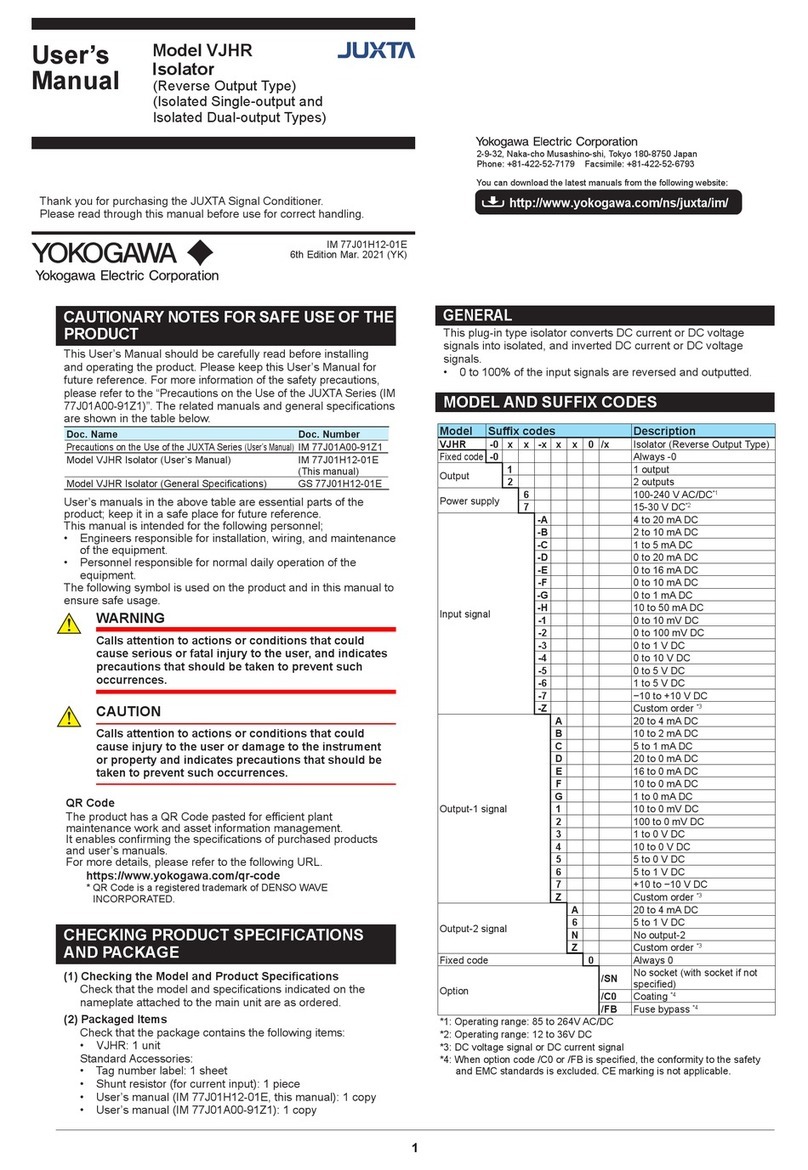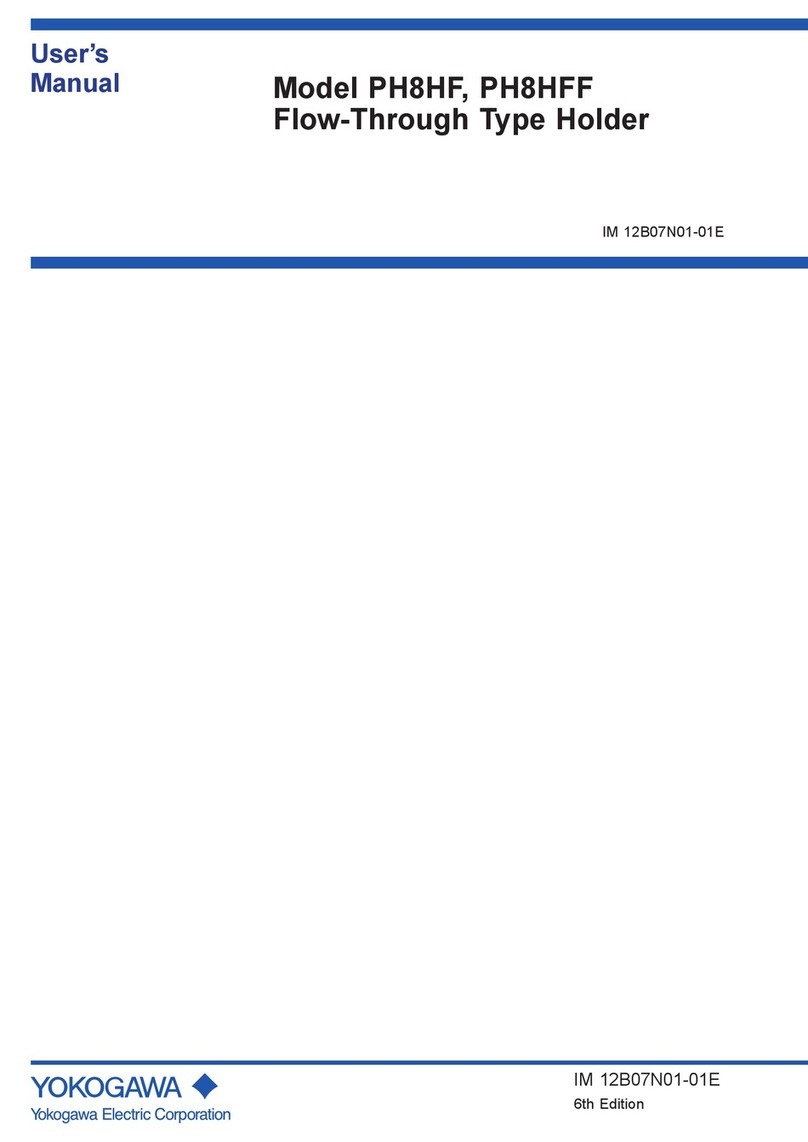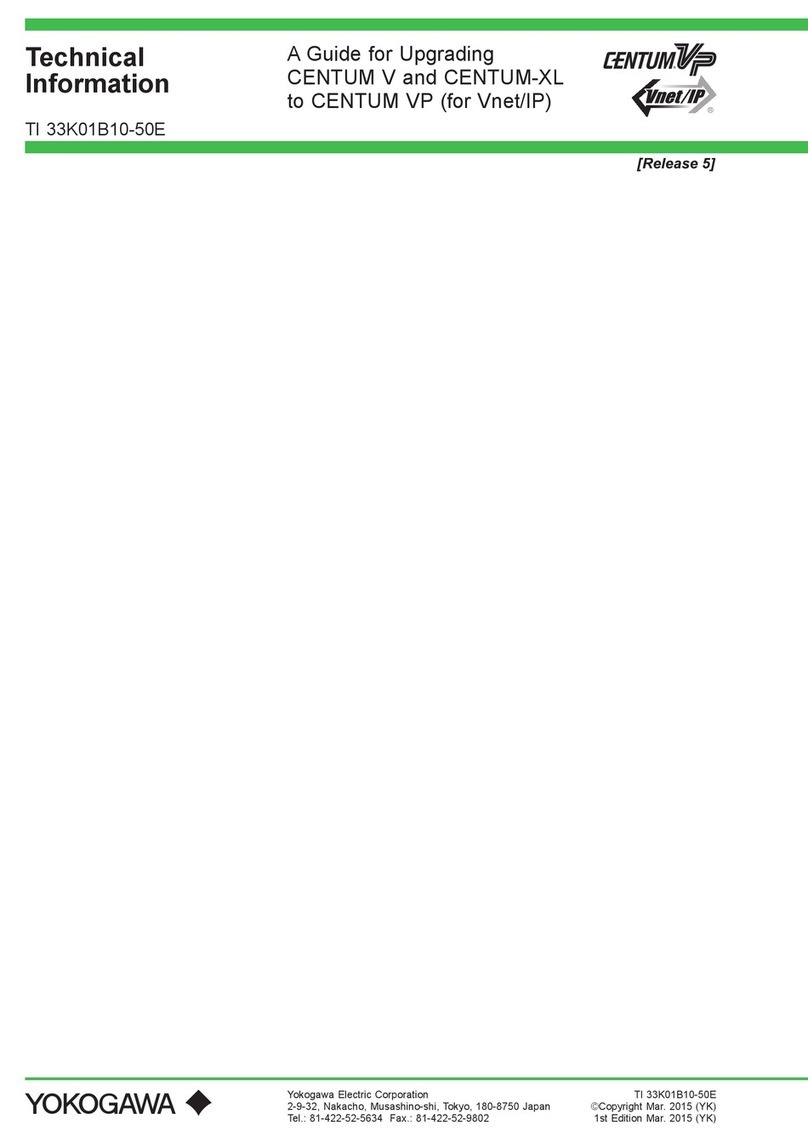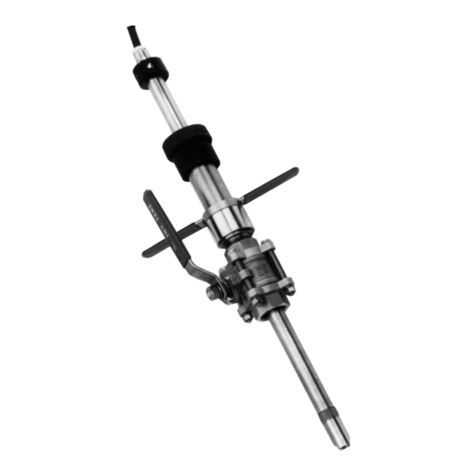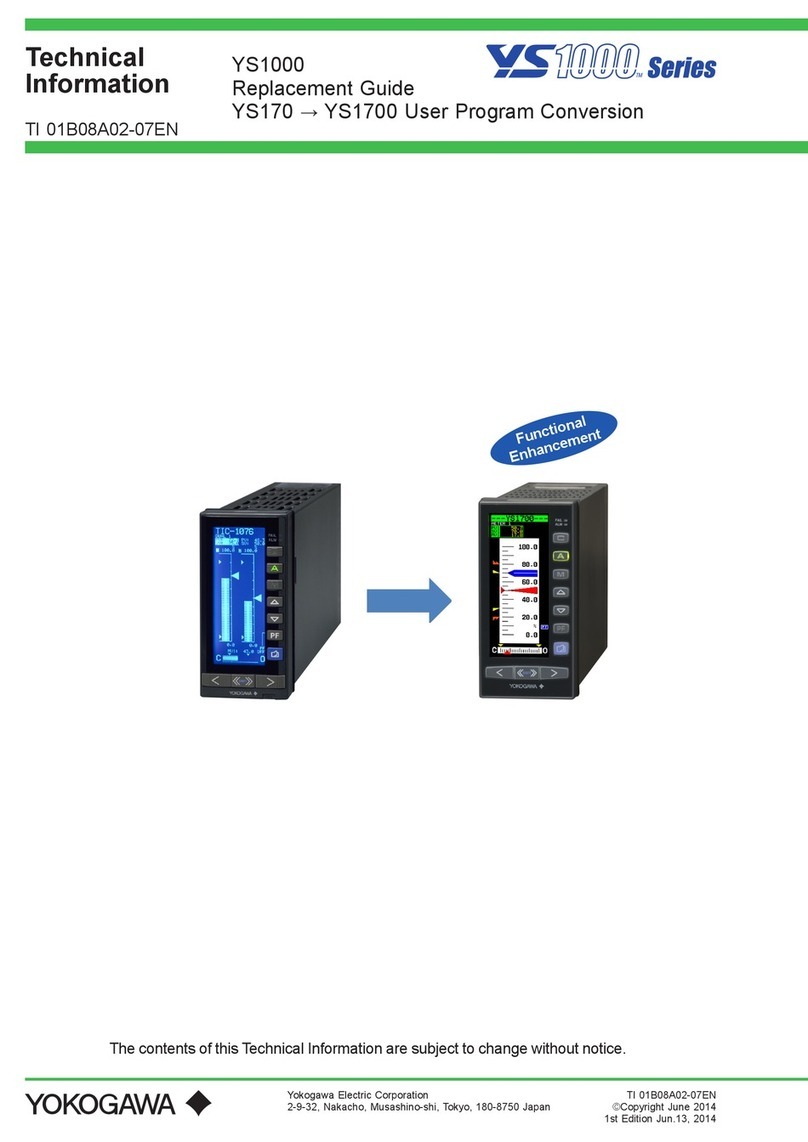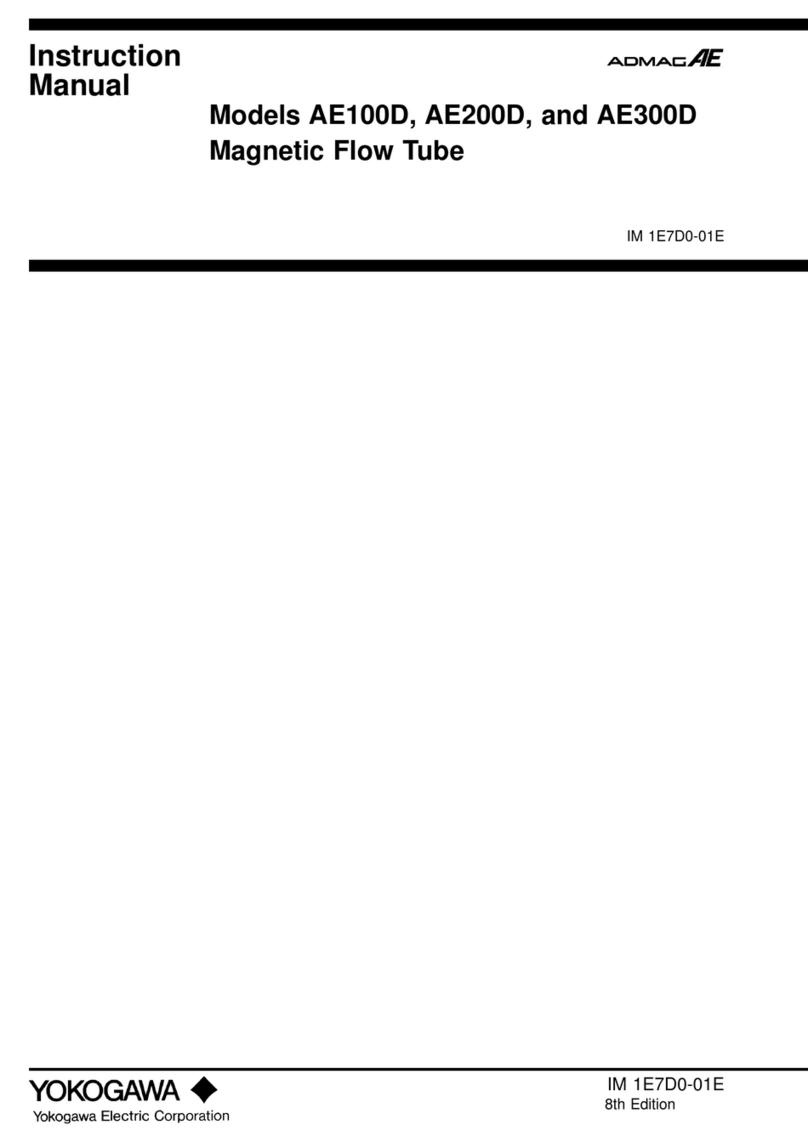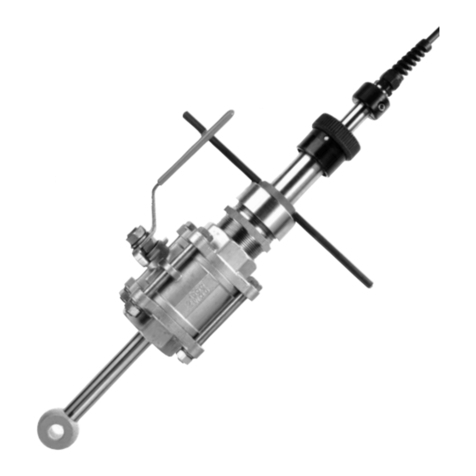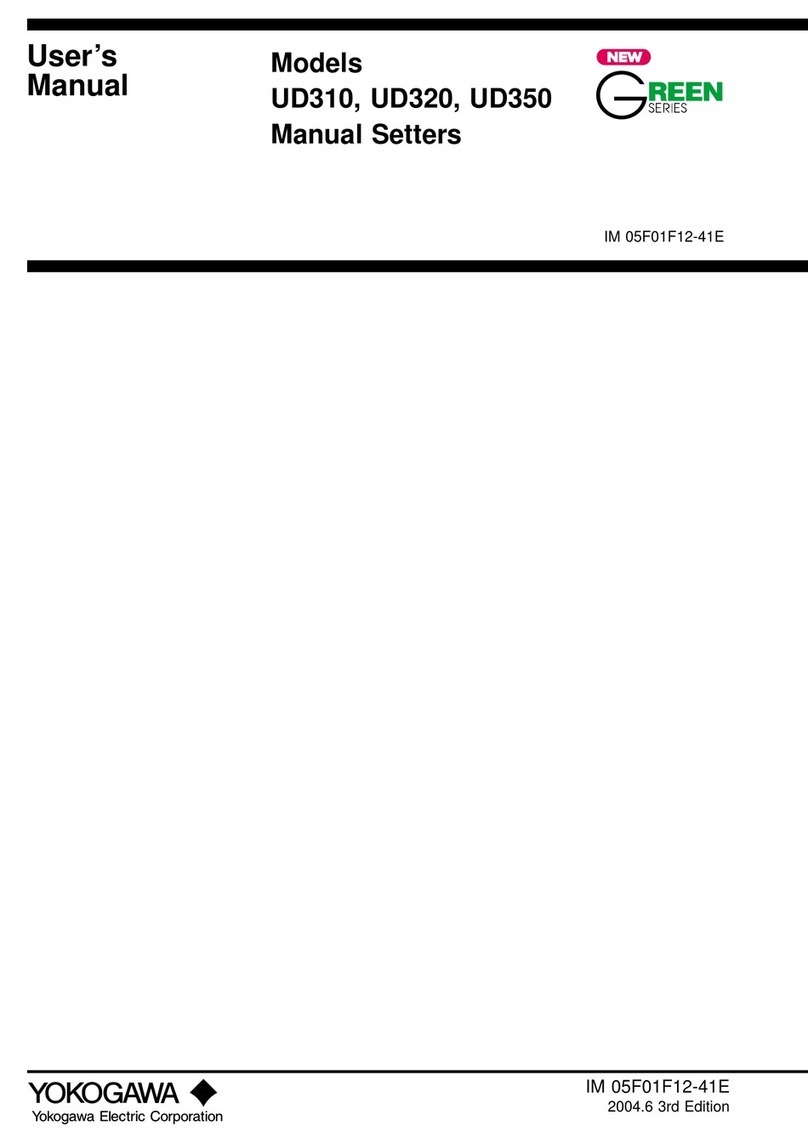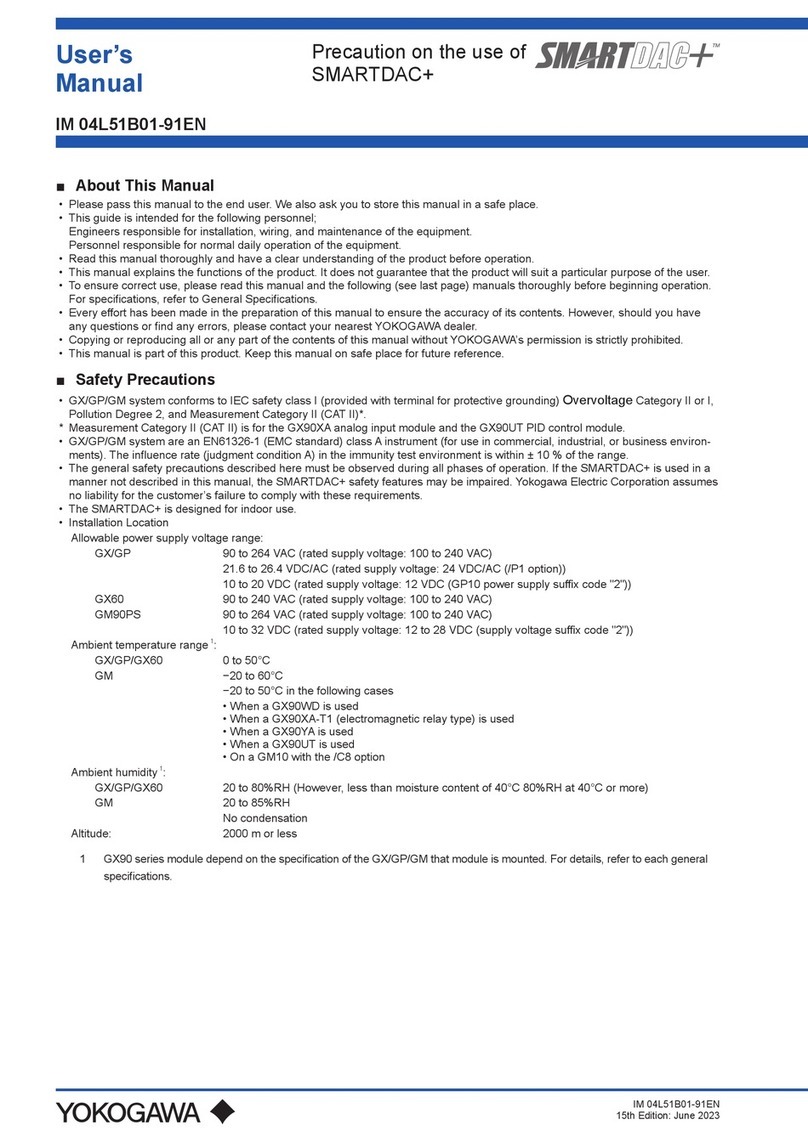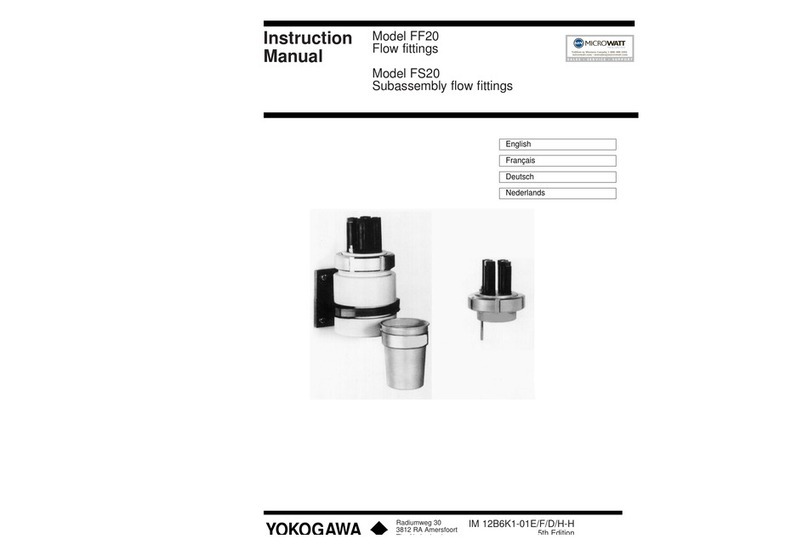
SM 04L01A01-01E 1
Important Notice To the User
This manual contains information for servicing the YOKOGAWA DAQSTATION DX100/
DX200. Check the serial number to confirm that this service manual corresponds to your
instrument.
Make sure not to use the wrong manual.
Before any maintenance and servicing,
read all safety precautions carefully.
Only properly trained personnel
may carry out maintenance and servicing in accordance
with and to the extent permitted by this service manual.
Do not disassemble the instrument or its parts
, unless otherwise clearly permitted by this
service manual.
Do not replace any part or assembly
,unless otherwise clearly permitted by this service
manual.
Yokogawa Electric Corporation (YOKOGAWA) does not in principle supply parts other
than those listed in the customer maintenance parts list in this service manual (mainly
modules
and
assemblies
). Therefore if an assembly fails, the user should replace the
whole assembly and
not
components within the assembly (see NOTE). If the user
attempts to repair the instrument by replacing individual components within the
assembly, YOKOGAWA assumes no responsibility for any consequences, such as
defects in instrument accuracy, functionality, or reliability, or user safety hazards.
YOKOGAWA does not offer more detailed maintenance and service information than that
contained in this service manual.
All reasonable efforts have been made to assure the accuracy of the content of this
service manual. However, there may still be errors such as clerical errors or omissions.
YOKOGAWA assumes no responsibility of any kind concerning the accuracy or contents
of this service manual, nor for the consequences of any errors.
All rights reserved. No part of this service manual may be reproduced in any form or by
any means without the express written prior permission of YOKOGAWA. The contents of
this manual are subject to change without notice.
Note
YOKOGAWA instruments have been designed in a way that the replacement of electronic parts
can be done on an assembly (module) basis by the user. YOKOGAWA instruments have also
been designed in a way that troubleshooting and replacement of any faulty assembly can be
done easily and quickly. Therefore, YOKOGAWA strongly recommends replacing the entire
assembly over replacing parts or components within the assembly. The reasons are as follows:
•The instruments use high-performance microprocessors, large scale CMOS gate arrays and
surface-mount components to provide state-of-the-art performance and functions.
•Repair of components can only be performed by specially trained and qualified maintenance
personnel with special highly-accurate tools, including costly ones.
•When taking the service life and cost of the instruments into consideration, the replacement of
assemblies offers the user the possibility to use YOKOGAWA instruments more effectively
and economically with a minimum in downtime.
•Zip is a trademark or registered trademark of Iomega Corporation in the United States
and/or other countries.
•Adobe and Acrobat are trademarks of Adobe Systems incorporated.
4th Edition : June 2010 (YK)
All Rights Reserved, Copyright ©2000, Yokogawa Electric Corporation
